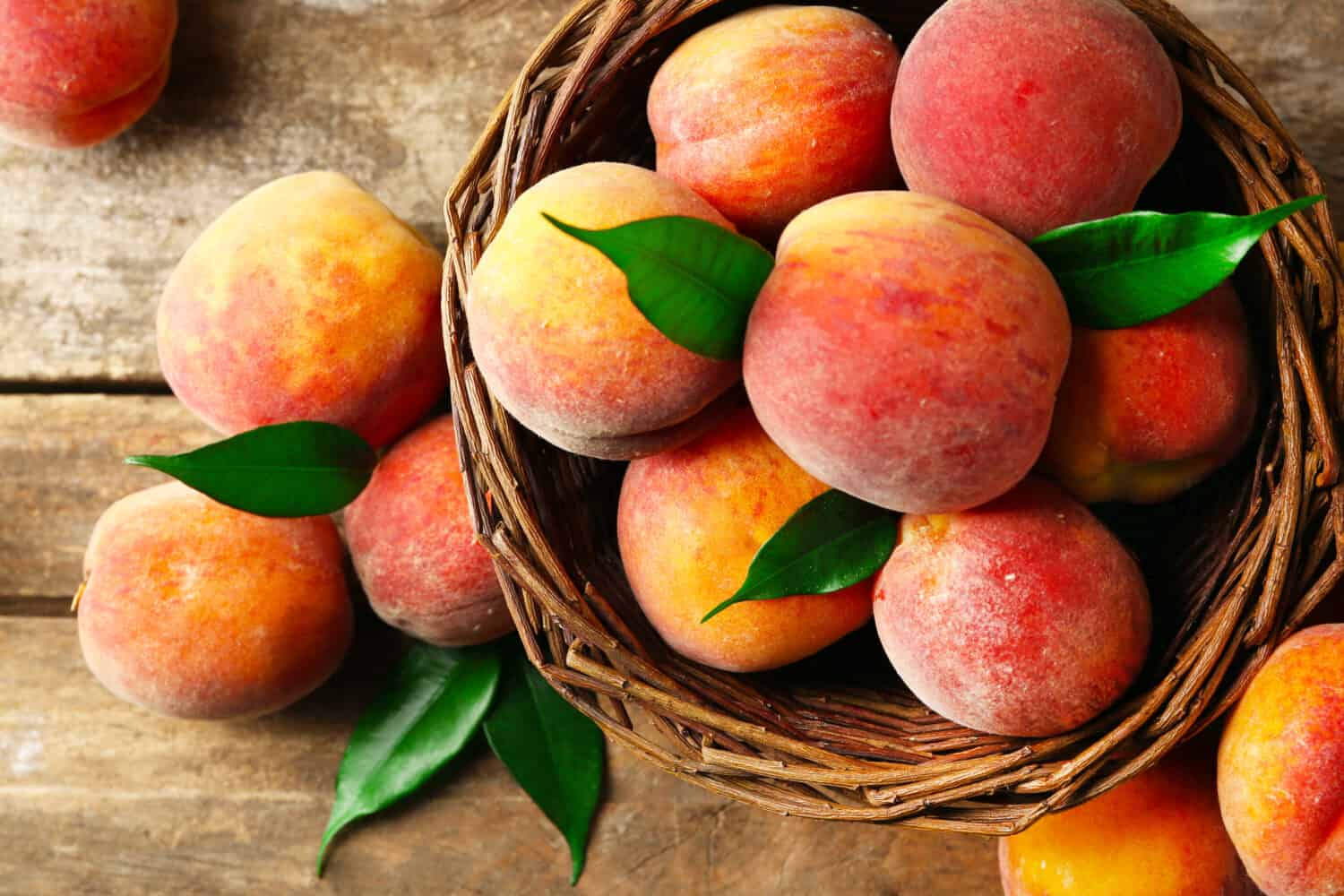How do apricots and peaches compare? Are they similar? Different? What about their health value? Let's examine their key similarities and differences and check out their nutritional benefits.
Apricots and peaches are botanical cousins. While both grow in the summer and have a tasty mix of sweetness and tartness, they vary in size, shape, color, and texture. Additionally, these two fruits are not available at the same time each season and grow in different climates. While cooks use them in similar recipes, these two fruits are not entirely interchangeable.
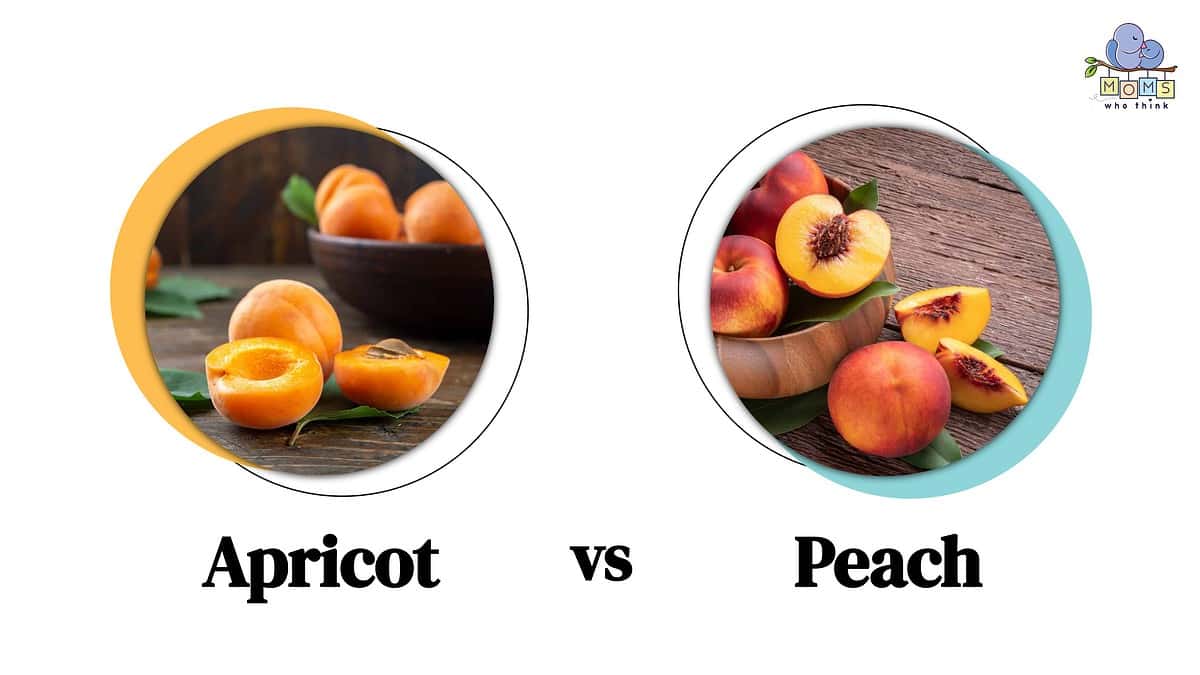
Apricot vs. Peach: What is an apricot?
Apricots are part of the botanical family Prunus, which includes their cousin, the peach. Cherries, plums, and nectarines are also part of this group. Apricots have a short shelf life. Following the harvest period from June to mid-August, only a quarter of the apricot crop finds its way to fresh markets. Most of the harvest is sold as dry fruit. Furthermore, their spoilage is why the canning of apricots is popular.
- The must-have convenient reference guide for every home cook!
- Includes more than 8,000 substitutions for ingredients, cookware, and techniques.
- Save time and money on by avoiding trips to grab that "missing" ingredient you don't really need.
When fresh, an apricot's color ranges from yellow to deep orange. Additionally, it often has a rosy color in some spots. At the center of the soft juicy flesh is a hard stone. Finally, its flavor tends toward sweet to a little tart.
Apricot vs. Peach: What is a peach?
Once native to China, a fresh peach's color ranges from light yellow to bright orange. Like apricots, the skin often has rosy colorations. A ripe peach should have a slight give to it but use your fingertips to check. Their flesh is typically firmer than the apricot's skin. Moreover, peaches have a fuzzy skin with a noticeable crease along the side of the fruit.
This fruit comes in many varieties and grows in diverse climates. The harvest season for peaches is typically late spring to early autumn, depending on the location. While apricots grow in cool climates, peaches prefer the hotter locales.
Peaches fall into three categories based on their pit type.
- Freestone – These peaches have easy to remove pits.
- Clingstone – It is difficult to remove the pits from these peaches.
- Semi-Freestone – This kind of peach is a hybrid of the first two groups.
The southern United States loves peaches. Georgia, lovingly known as the “Peach State,” is one of the top producers in America. Nonetheless, South Carolina produces more peaches than Georgia. Also, Georgia annually hosts the world's largest peach cobbler, measuring eleven by five feet. Finally, everyone celebrates National Peach Month in August.

Georgia is one of the top peach producers in the United States. Its nickname is the “Peach State.”
©Katherine Welles/Shutterstock.com
Apricot vs. Peach: Key Differences
Five key differences exist between apricots and peaches. The most noticeable difference occurs in their size, shape, taste, and flavor. Additionally, apricots and peaches prefer different growing climates.
| Apricots | Peaches | |
|---|---|---|
| Size and Shape | Apricots are smaller and have an oval shape. | Peaches are larger and have a distinct crease along the side of the fruit. |
| Color and Texture | Ranging from yellow to orange, apricots have a smooth, velvety skin. | Orange or reddish yellow in color, peaches have fuzzy skin. |
| Taste and Flavor | Apricot's taste is a blend of sweet and tart. The flesh is firm with a slight juiciness. | Peaches are sweeter and juicer. Also, they have a softer flesh. |
| Preservation | Apricots spoil quickly. This is why they are dried and canned quickly. | While peaches don't have a long shelf life, they stay fresh longer. However, some prefer them dried or canned. |
| Geographic preferences | Apricots grow in cooler climate regions. | Peaches thrive in warmer climates. |
Whichever fruit you choose, these summer fruits are healthy and affordable. An excellent source of nutrients, both fruits are versatile, often incorporated into pies, jams, and desserts.
Although they have different taste profiles, they can be swapped in baking recipes. However, if you replace peaches with apricots, add more water and sugar. Additionally, since apricots are smaller than peaches, add more apricots to the recipe.
Before eating either fruit, wash the skin carefully. However, do not use a vegetable brush because this will damage the fragile skin of both fruits. Also, be sure to remove the hard pit in the center of the fruit.
- The must-have convenient reference guide for every home cook!
- Includes more than 8,000 substitutions for ingredients, cookware, and techniques.
- Save time and money on by avoiding trips to grab that "missing" ingredient you don't really need.
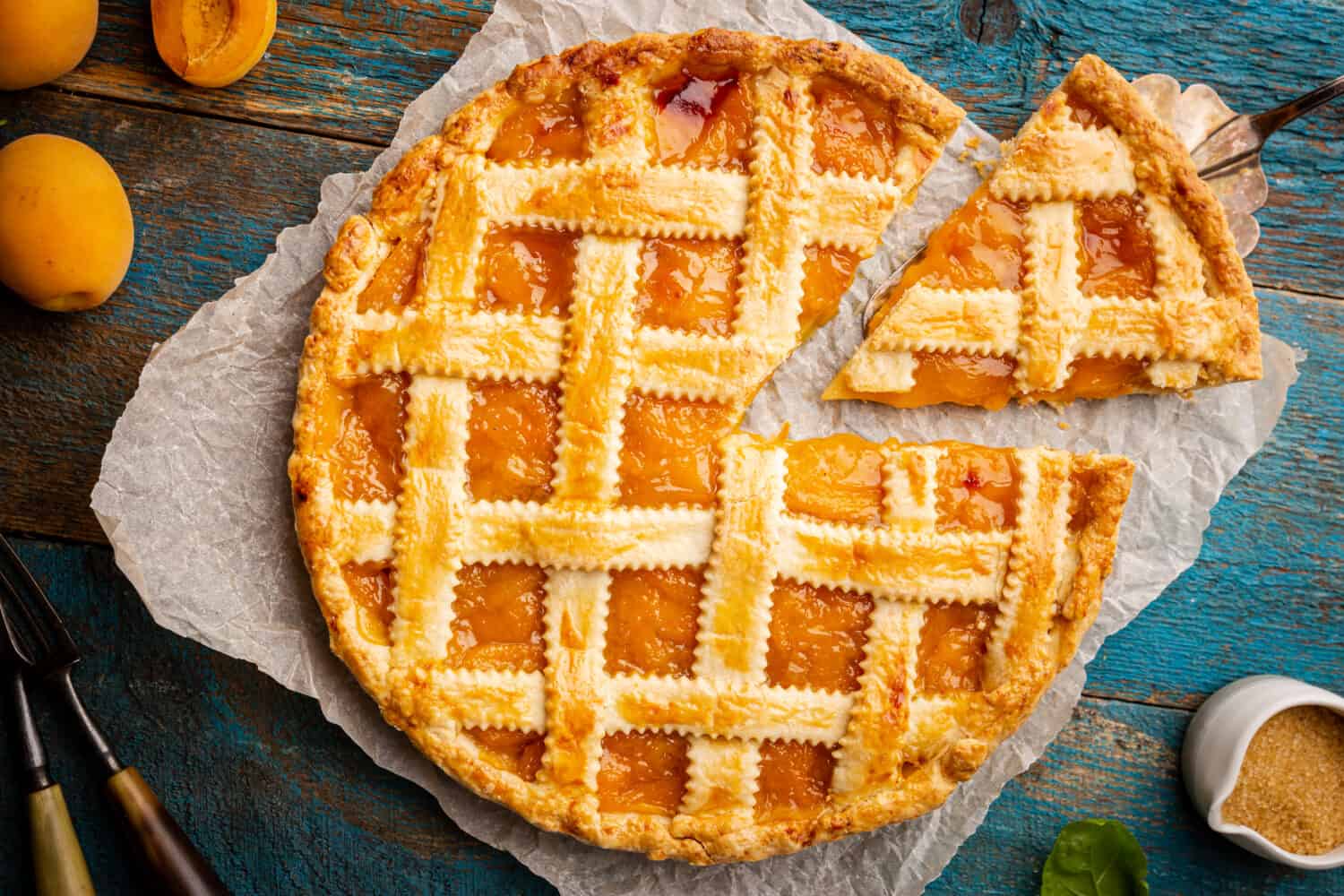
With minor adjustments, apricots can be substituted in peach recipes.
©Goskova Tatiana/Shutterstock.com
Apricot vs. Peach: Nutritional Comparison
Luckily, both of these yummy fruits have numerous health benefits. Apricots contain vitamins A and C, which are known to promote healthy skin and good immune functions. They also contain potassium, great for regulating blood pressure. Apricots also have lots of fiber for the digestive system.
On the other hand, peaches contain a lot of vitamin C and antioxidants. Peaches have a high-water content, so they provide hydration, especially in the summer months. While peaches have less vitamin A than apricots, they contain enough to boost the immune system and maintain good vision.
Below is a table comparing both fruits. These are approximate values, and your personal nutritional needs may vary.
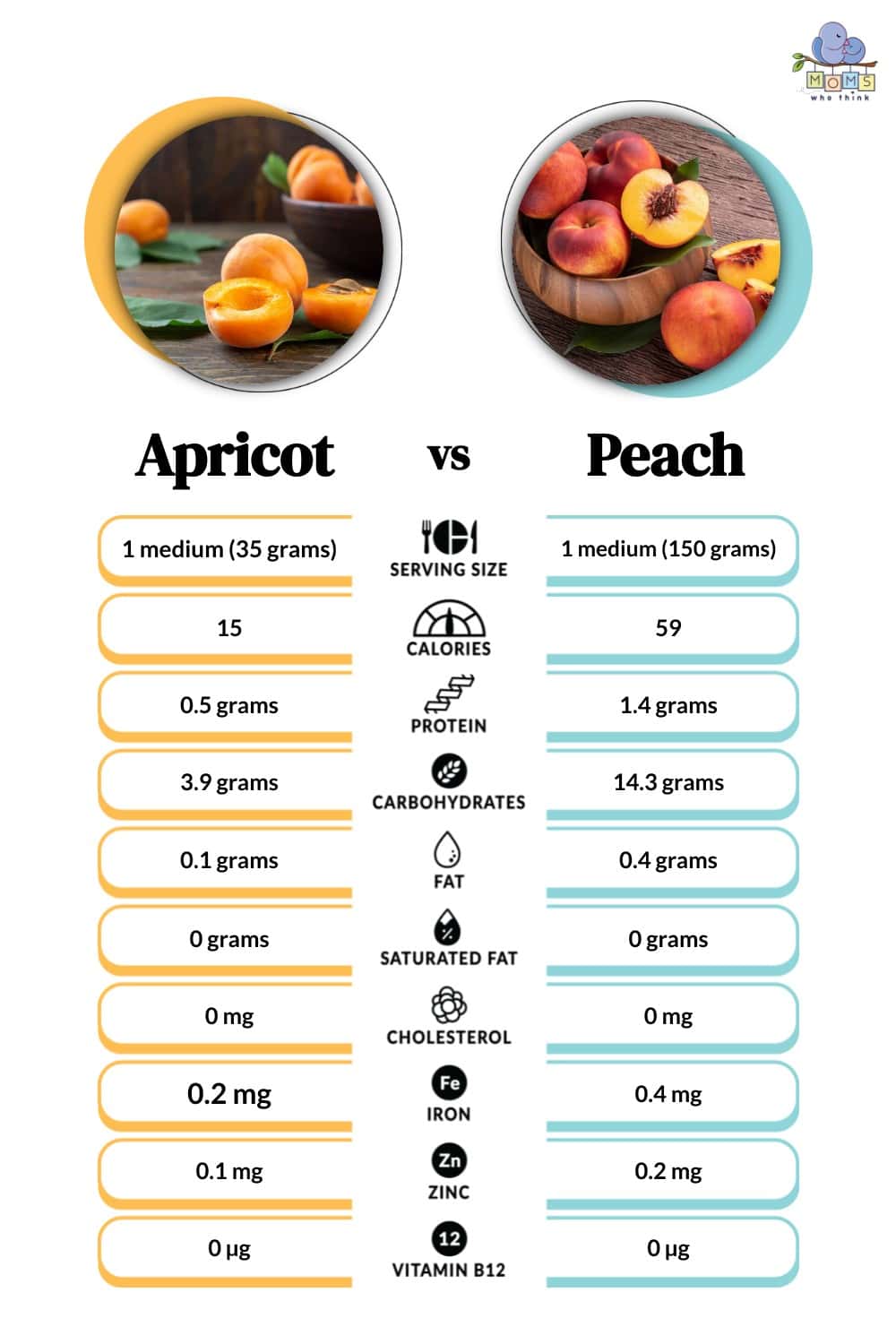
It is worth noting that eating fresh apricots and peaches is preferable to eating the dried versions. This is because dried fruit has more calories and added sugars. When water is removed, the natural sugars and nutrients are more concentrated. Moreover, sugar is typically added to preserve texture and taste. Fiber is also lost during this process. So, when possible, enjoy fresh apricots and peaches.
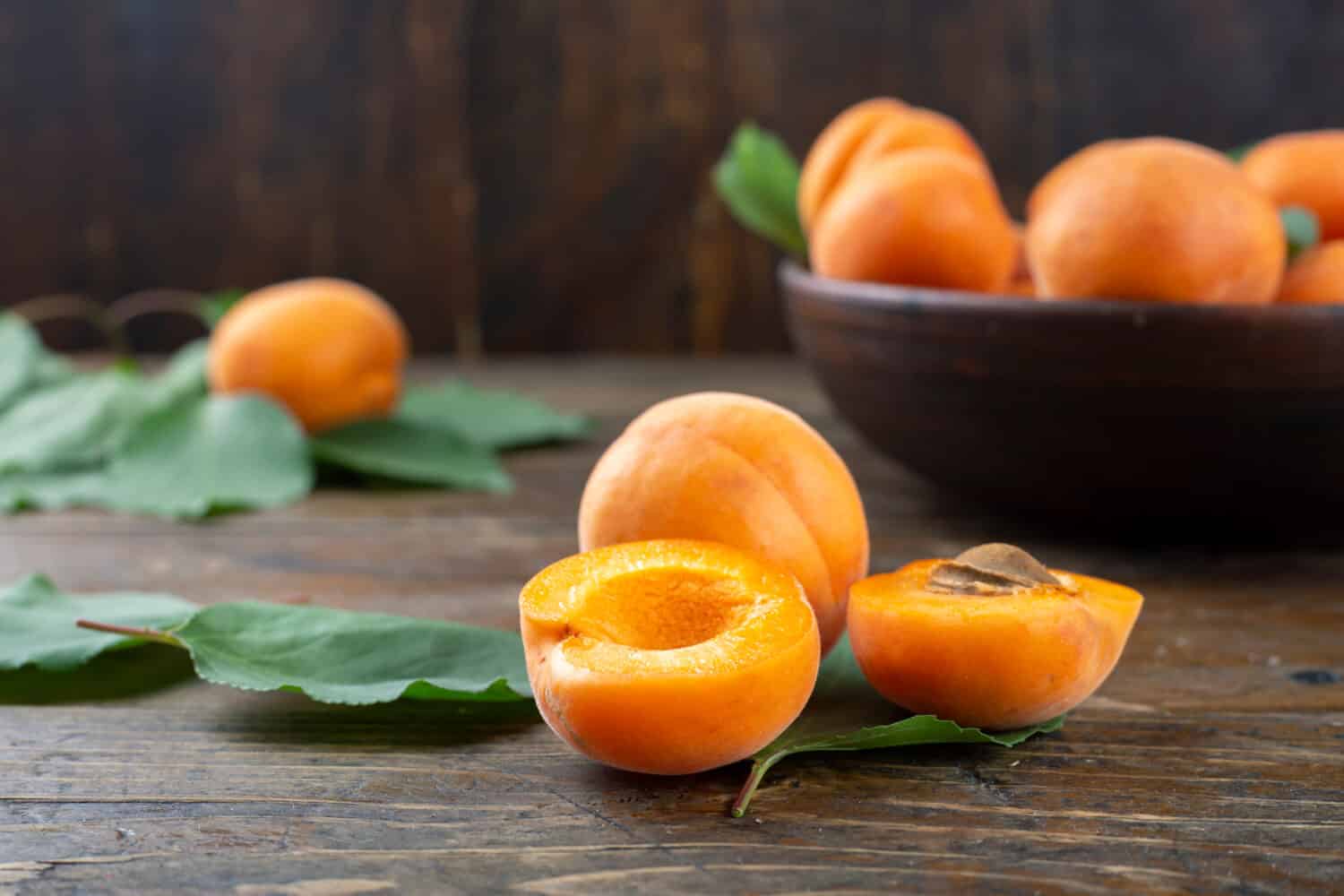
Apricots and peaches are excellent sources of vitamins A and C.
©Shyripa Alexandr/Shutterstock.com
Apricot vs. Peach: Healthy ways to cook with them
Stone fruits like apricots and peaches are great in sweets, but they can also be used in healthier dishes like grain bowls, sandwiches, salads, sautés, and more. Here are suggestions for fun and healthy ways to enjoy both fruits.
- Either is an excellent choice for oatmeal. How about this recipe for overnight oats? Or this recipe for baked peaches and cream?
- Apricots and peaches can be boiled, poached, or roasted. When cooking apricots, choose ones that are not fully ripe. Ripe apricots are difficult to cook. If boiling apricots for preserves, add cinnamon, clove, and other spices to the pot fifteen minutes before they finish cooking.
- Add peach slices to chicken recipes like this one.
- Smoothies, anyone? How about this peach carrot smoothie?
- Of course, peach is great in mixed drinks. It is also a wonderful addition to sangria.
- Peach tea is especially popular in the summer months.
- Still want desserts, but with less calories? Try this apricot loaf cake. Or perhaps apricot orange bread.
- Apricot glaze is a versatile option. Use it to elevate a sandwich or add it to grilled meats. It is also delicious with cheese, especially baked brie.
- Peaches are tasty salad toppings. Try a grilled peach, rice, and arugula salad.
- Salsa also benefits from peaches. Try this chicken topped with peach-cucumber salsa.
- Kabobs are another option. Try barbecued shrimp and peach kababs.
However, you choose to cook your apricots or peaches, either will add juiciness and sweetness to your recipes.
One Final Note
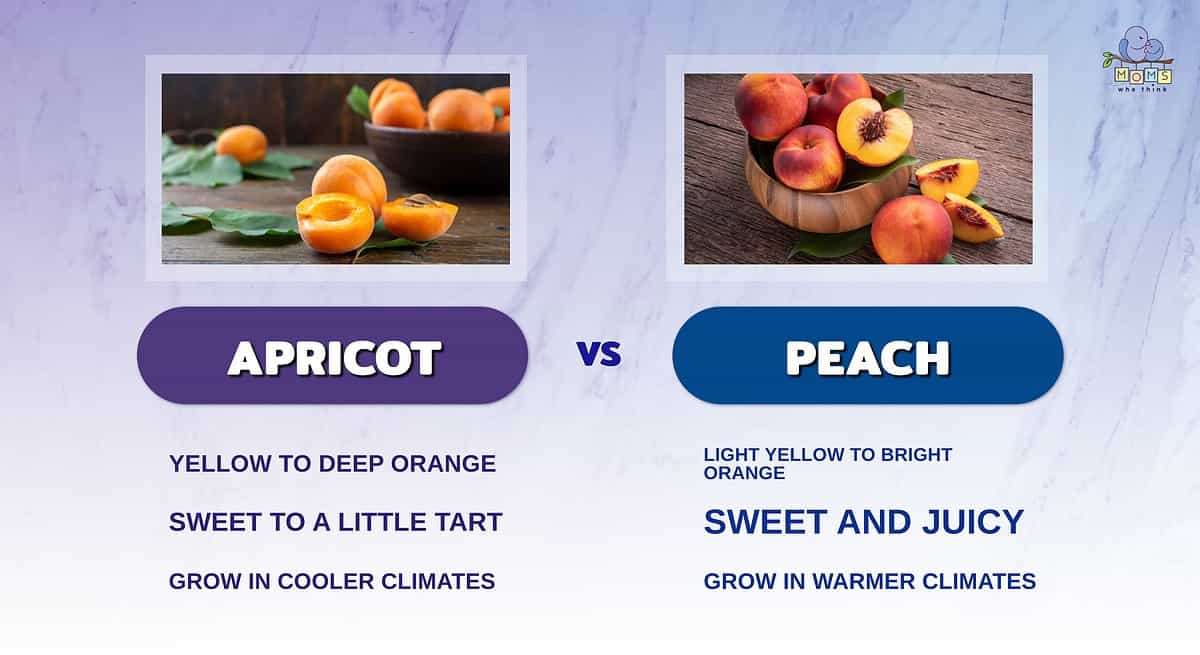
Apricots and peaches are botanical cousins that grow in different climates. While they are both delicious and healthy fruits, they vary in important ways. These variations include their sizes, shapes, taste profiles, textures, and shelf lives. While both are yummy, peaches garner more acclaim, especially in the southern United States.
When it comes to health benefits, they are both great choices, even as they offer slightly different nutritional profiles. Inside the sweet and tart apricot is vitamin A, C, and potassium. While its fuzzy cousin, the peach, has less of these nutrients, it still packs a punch and provides extra hydration. Both are low calorie snacks. Finally, both make great jams, jellies, and desserts, even if those recipes add calories. Whichever you choose, apricots and peaches provide excellent health benefits while also tasting heavenly.
Print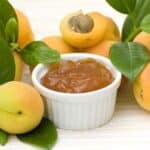
Apricot Honey Ham Glaze
Ingredients
- 1/2 cup apricot preserves
- 1/2 cup honey
- 1 tablespoon corn starch
- 3 tablespoons lemon juice
- 1/4 teaspoon ground cloves
Instructions
- Combine all ham glaze ingredients in a saucepan over medium heat.
- Heat, stirring constantly, until thickened and bubbly.
- Spoon ham glaze over ham and baste during last 30 minutes of baking. Makes 1 cup of ham glaze.
The image featured at the top of this post is ©Africa Studio/Shutterstock.com
